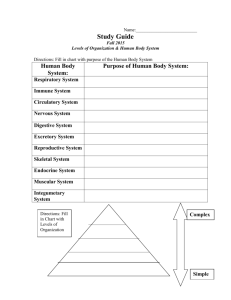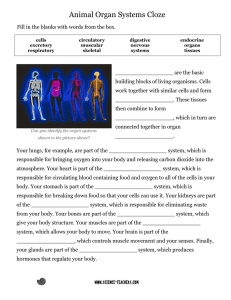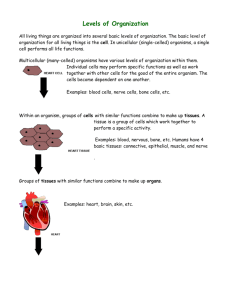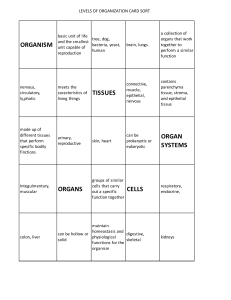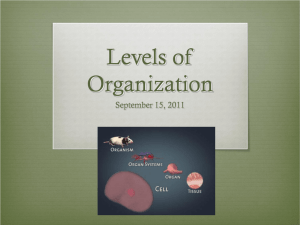Levels of Organization
advertisement
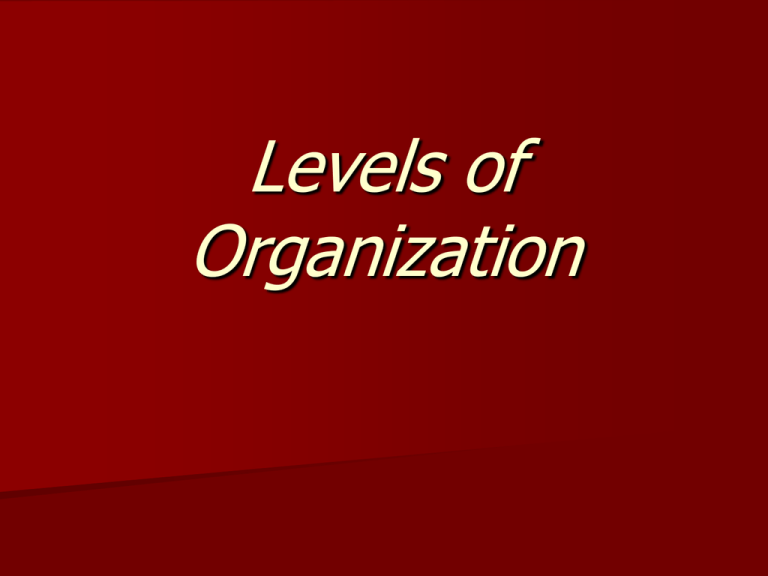
Levels of Organization LEVEL 1 - Cells Are the basic unit of structure and function in living things. May serve a specific function within the organism Examples- blood cells, nerve cells, bone cells, etc. LEVEL 2 - Tissues Made up of cells that are similar in structure and function and which work together to perform a specific activity Examples - blood, nervous, bone, etc. Humans have 4 basic tissues: connective, epithelial, muscle, and nerve. LEVEL 3 - Organs Made up of tissues that work together to perform a specific activity Examples - heart, brain, skin, etc. LEVEL4 - Organ Systems Groups of two or more tissues that work together to perform a specific function for the organism. Examples - circulatory system, nervous system, skeletal system, etc. The Human body has 11 organ systems - circulatory, digestive, endocrine, excretory (urinary), immune(lymphatic), integumentary, muscular, nervous, reproductive, respiratory, and skeletal. LEVEL 5 - Organisms Entire living things that can carry out all basic life processes. Meaning they can take in materials, release energy from food, release wastes, grow, respond to the environment, and reproduce. Usually made up of organ systems, but an organism may be made up of only one cell such as bacteria or protist. Examples - bacteria, amoeba, mushroom, sunflower, human The levels of organization in the correct order then are: cells --> tissues --> organs --> organ systems --> organisms
